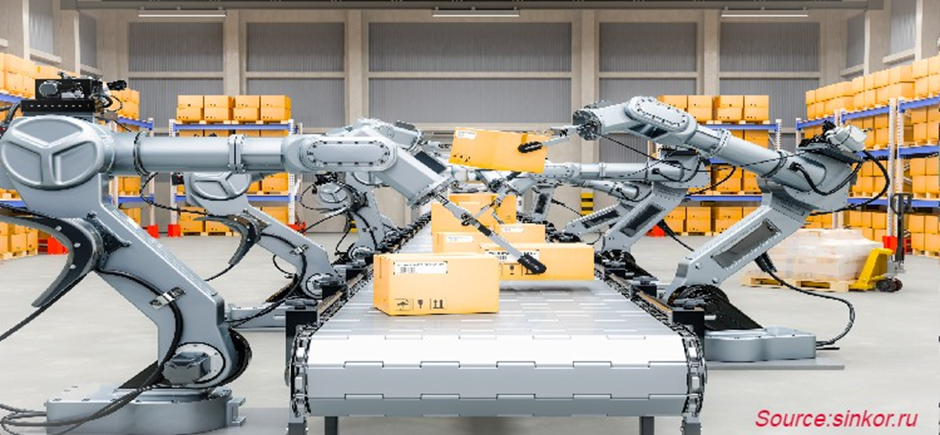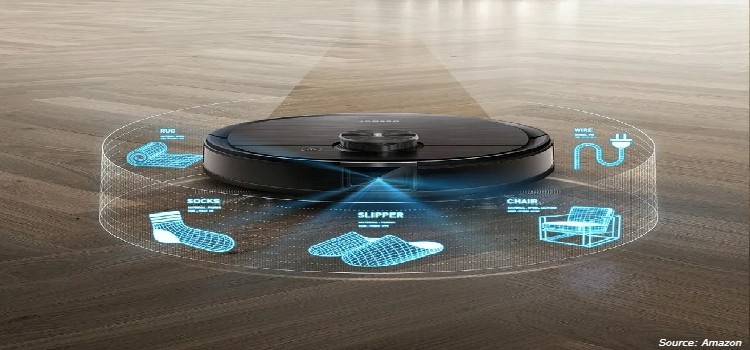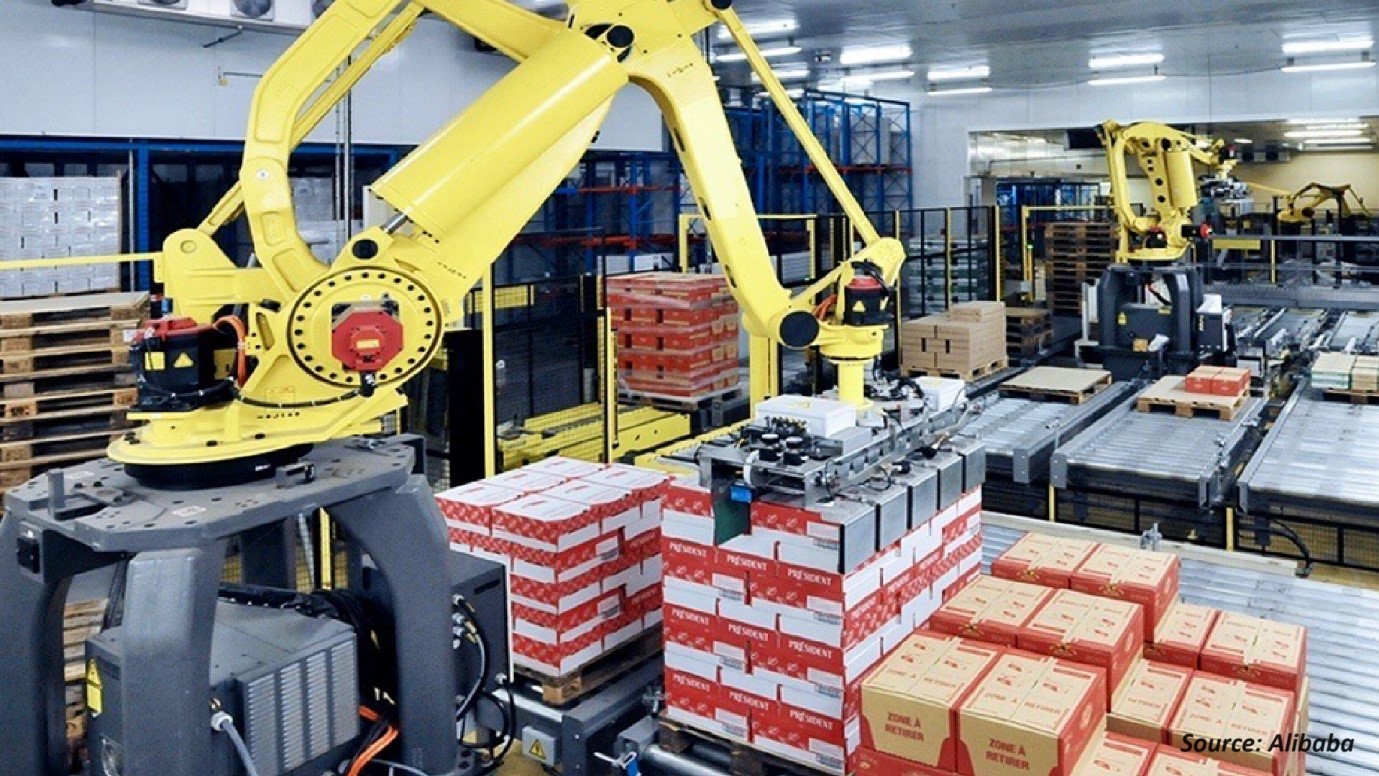Maximizing Efficiency Through The Power Of Predictive Maintenance Across Industries
17-Sep-2024

Introduction
The Predictive Maintenance (PdM) industry is reshaping industrial equipment maintenance strategies by leveraging state-of-the-art technologies. It harnesses the potential of Internet of Things (IoT) sensors, artificial intelligence (AI)-driven analytics, and robust data management systems to provide continuous monitoring of equipment conditions.
Through meticulous analysis of variables such as temperature, vibration, and performance metrics, it accurately foresees maintenance needs, effectively curtailing unforeseen downtimes. The integration of machine learning algorithms plays a pivotal role in sifting through extensive data, identifying patterns and anomalies, and refining accuracy with time. This not only trims operational expenses but also extends the operational life of machinery, rendering it indispensable in industries reliant on sophisticated equipment.
Nonetheless, challenges such as the initial investment and ensuring model precision persist. Looking forward, progressions in IoT, AI, and analytics coupled with the incorporation of edge computing and 5G technology are poised to drive the growth and innovation of this dynamic industry.
According to a 2022 Deloitte report, PdM could curtail facility downtime by 5–15% and boost labor productivity by 5–20%. Furthermore, PdM positively impacts operational sustainability by minimizing energy consumption and waste. This underscores the profound potential of predictive maintenance in revolutionizing industrial operations. Let us look into the emerging technologies that drive PdM.
Some of the Emerging Technologies Driving PdM
Machine Learning and AI Algorithms: Machine learning (ML) and AI are transformative forces in the field of PdM. By harnessing these technologies, systems can learn and predict outcomes based on intricate data patterns. In manufacturing, ML algorithms are instrumental in analyzing extensive datasets generated by equipment.
This analytical prowess enables the identification of potential failures before they occur, facilitating a shift toward proactive maintenance strategies. This approach not only minimizes unplanned downtime but also optimizes resource allocation and reduces operational costs.
This application of ML and AI in PdM aligns with industry trends, where companies are increasingly recognizing the value of predictive analytics in enhancing maintenance efficiency. For example, Rockwell Automation's Fiix division announced the launch of Asset Risk Predictor (ARP), its inaugural AI-powered predictive maintenance software. ARP leverages machine learning algorithms to analyze sensor data and forecast asset health, enabling proactive measures to prevent failures.
It quickly identifies equipment failure signatures, providing early warnings for timely intervention. ARP can be used independently or integrated into Fiix CMMS for seamless work order generation. This software represents a significant breakthrough in predictive maintenance, empowering maintenance teams to optimize asset reliability and operational efficiency.
Internet of Things (IoT): IoT is a cornerstone of predictive maintenance, leveraging a network of interconnected devices and sensors to gather real-time data essential for assessing equipment health. This technology is particularly crucial in sectors such as energy production, where IoT-enabled sensors monitor vital parameters such as turbine vibrations.
By continuously analyzing this data, potential issues can be identified in advance, enabling timely maintenance interventions to prevent costly breakdowns and ensure seamless operations. This application of IoT exemplifies its transformative impact on modern maintenance strategies.
For instance, Advantech and Actility launched a state-of-the-art AI-powered predictive maintenance IoT solution for rotating machinery, enabling machine operation teams to achieve prognostics and health management (PHM) at scale. The solution streamlines the monitoring of multiple machines by providing real-time and seven-day health indices, empowering teams to detect anomalies and prevent asset failures days in advance.
Augmented Reality (AR): AR is a transformative technology that seamlessly merges digital information with the physical world, revolutionizing maintenance procedures. Technicians equipped with AR glasses gain access to visual guides and information overlays, significantly enhancing their troubleshooting capabilities. This innovation is particularly valuable in sectors such as aviation, in which technicians employ AR to pinpoint and resolve complex issues with aircraft components efficiently.
By providing real-time, context-specific information directly within the technician's field of vision, AR not only streamlines maintenance tasks but also contributes to heightened accuracy and efficiency in addressing intricate technical challenges. This technology has emerged as a game-changer in the field of maintenance, offering a potent tool for industries reliant on precise and efficient equipment upkeep.
For example, the RAMEN project, a collaborative effort by LMS, Biba, Whirlpool, and Comau, introduces innovative software for machine monitoring and predictive maintenance, uniquely combining these technologies with augmented reality to facilitate more intuitive and efficient manufacturing processes than before.
RAMEN's user-friendly interface enables immediate action on the shop floor, distinguishing it from other solutions such as Rockwell Automation's Fiix Asset Risk Predictor and Advantech and Actility's AI-based Intelligent Predictive Maintenance IoT Solution for Rotating Machinery. RAMEN's unique remote asset health analysis capability, particularly valuable during periods of restricted travel, streamlines data connection and analysis, benefiting industrial operators.
Digital Twins: Digital twins play a crucial role in predictive maintenance by providing a virtual replica of physical equipment or systems. This virtual representation mirrors the real-world behavior of the asset, allowing for simulations and analysis. Continuous monitoring the digital twin can collect and analyze data in real time. This enables the detection of anomalies and potential issues before they escalate into critical failures.
Additionally, through predictive algorithms and machine learning, digital twins can forecast the remaining useful life of components, optimizing maintenance schedules and resource allocation. This technology empowers organizations to implement proactive maintenance strategies, reducing downtime and improving overall operational efficiency.
For example, Holcim, a leading Swiss cement company, pioneered the world's first cement plant digital twin, a real-time 3D virtual model of one of its Swiss sites that accurately replicates the physical facility. By integrating Holcim's enterprise software and performance prediction algorithms with the 3D model, the digital twin enables faster, more efficient, and more reliable operations at minimal financial cost than before.
By leveraging sensors, data analytics, and machine learning capabilities, the digital twin prevents costly operational downtime and enables predictive maintenance, optimizing asset health and performance. This groundbreaking initiative is a part of Holcim's Plants of Tomorrow program. It deploys the Industry 4.0 technologies, including digital twins, AI, and big data analytics, across its sites to enhance efficiency, safety, and sustainability.
Blockchain Technology: Blockchain technology enhances predictive maintenance by ensuring secure and transparent record-keeping. It provides an immutable ledger where maintenance data is recorded, making it tamper-proof and traceable. This level of data integrity builds trust and transparency in the maintenance process.
Additionally, blockchain enables the creation of smart contracts, which can automate maintenance tasks based on predefined conditions. For instance, when a specific threshold is reached in equipment performance data, the smart contract can trigger a maintenance request. This streamlines the process and reduces response times, ultimately enhancing the effectiveness of predictive maintenance strategies.
For instance, IOTA Foundation partnered with Best Materia and IMC, and pioneering the world's first blockchain predictive maintenance system to create a decentralized and open-source distributed ledger for robust data integrity. By digitizing risk-based maintenance (RBM), it enhances safety and efficiency in industrial plants. The system, leveraging IOTA's technology, offers superior security compared to centralized databases.
Reasons for Changing the Landscape of Predictive Maintenance
PdM significantly reduces downtime and lowers maintenance costs. As per the report published by Deloitte, PdM has the potential to streamline maintenance planning by 20¬–50%, enhance equipment uptime and availability by 10–20%, and lead to a 5-10% reduction in overall maintenance expenses.
The initial adoption of predictive capabilities for extruders led to an impressive 80% drop in unplanned downtime, yielding cost savings of approximately USD 300,000 per asset. The shift from scheduled to condition-based maintenance optimizes resource allocation.
By addressing issues based on real-time equipment conditions, resources are allocated efficiently and unnecessary repairs are minimized. PdM significantly enhances safety by proactively identifying potential equipment failures. This proactive approach helps prevent accidents and disruptions, making the workplace safer for employees.
Conclusion
In conclusion, the predictive maintenance (PdM) industry leverages cutting-edge technologies such as IoT sensors, AI analytics, and data systems to accurately forecast maintenance needs, reducing downtime and extending equipment life. Despite challenges, advancements in IoT, AI, and analytics, alongside edge computing and 5G, promise the industry growth. A 2022 Deloitte report indicates PdM could reduce downtime by 5–15% and boost productivity by 5–20%. Emerging technologies driving PdM include ML, IoT, AR, digital twins, and blockchain, enabling proactive maintenance and improving operational efficiency. This transformative potential underscore the need for ongoing innovation and investment in the industry.
About the Author
 Shyam Gupta is a passionate and highly enthusiastic researcher with over four years of experience. He assists clients in overcoming difficult business challenges by providing actionable insights through exhaustive research. He has closely monitored several industries, including Cloud, Digital Transformation, and Gaming. He has a keen interest in writing articles and uses blogs to share his thoughts. He spends his time reading and painting when not keeping up with industry news. The author can be reached at info@nextmsc.com
Shyam Gupta is a passionate and highly enthusiastic researcher with over four years of experience. He assists clients in overcoming difficult business challenges by providing actionable insights through exhaustive research. He has closely monitored several industries, including Cloud, Digital Transformation, and Gaming. He has a keen interest in writing articles and uses blogs to share his thoughts. He spends his time reading and painting when not keeping up with industry news. The author can be reached at info@nextmsc.com
Add Comment
Related Blogs
Leaders in Automation Kion, Honeywell, and ABB Influence on the Warehouse Market
Next Move Strategy Consulting forecasts that the warehouse a...
Unveiling the Top 10 Innovators in the Global Robot Vacuum Cleaner Sector
Next Move Strategy Consulting states that the global robot v...
Shaping the Future: The Transformative Impact of Packaging Robots on Manufacturing Efficiency
Packaging robots include automated machines designed to hand...










